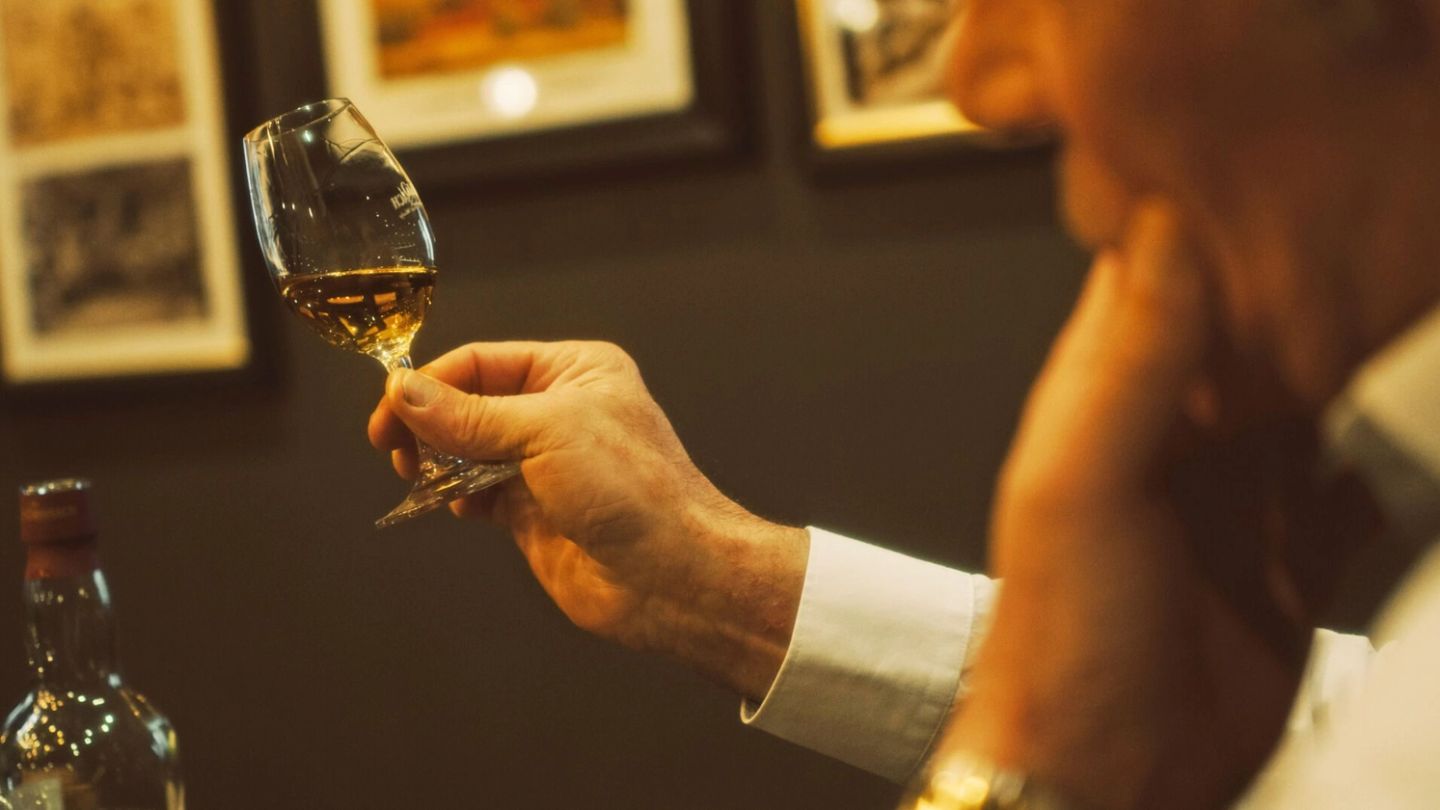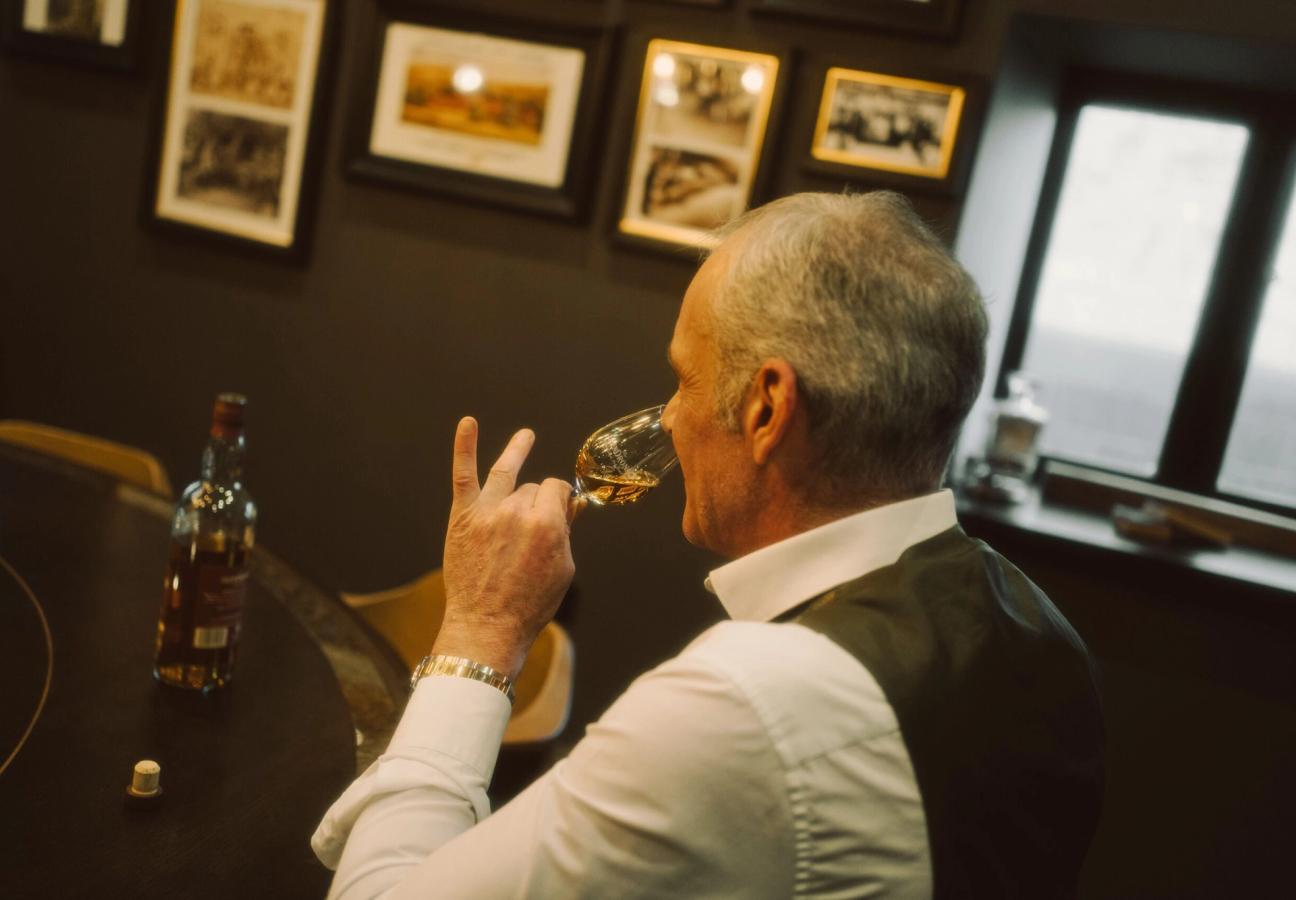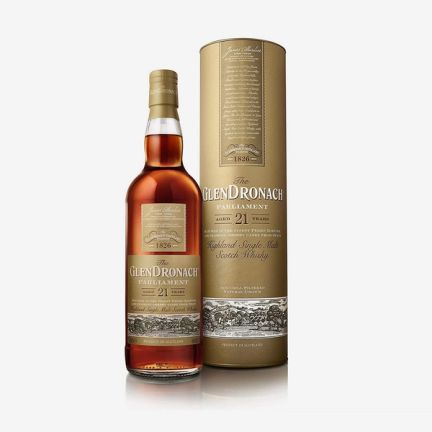

The 12 steps you should follow for the ultimate whisky tasting
The GlenDronach’s global ambassador, Stewart Buchanan, shares a dozen tips to create an unrivalled scotch whisky tasting….
When Gentleman’s Journal travelled to The GlenDronach distillery, we discovered a stronghold of spirit-making excellence. Here was a whiskymaker, established almost two centuries ago, that still honoured and heeded the hallowed practices of the past; a place that not only taught us how to produce these excellent expressions, but how to enjoy them, too.
And the distillery’s dram-raiser-in-chief, Stewart Buchanan, offered up the most creative, comprehensive whisky tasting techniques this side of Speyside. As The GlenDronach’s global ambassador, the Scotsman has travelled far and wide, sharing the brand’s wares with the world. And he tells us that, for the last 30 years, he has used these same sipping tips to get the most from every bottle of whisky. Here are his 12 steps for the ultimate whisky tasting…
Step #1: Let your chosen bottle warm to room temperature
If you’re taking your whisky out of a drinks cabinet, or if you store it in a slightly colder place to protect the bottle, begin by bringing it into the room in which you’re going to drink it. You should always let it come up to room temperature.
Step #2: Find the perfect glass (preferably stemware)
Next up, glassware. I like a stem glass. It’s not necessarily a problem to use any glass you have to hand — but, with a stem glass, you’re not letting the whisky heat up. Also, try to find a glass with a tulip shape, whether that be a sherry ‘copita’ or a nosing glass; anything with a slight funnelling to the top of the glass to concentrate those aromas in the right direction. It’s also got a nice tactile feel, for viewing or nosing your whisky.

Step #3: Pour it, and let it breathe (one minute per year)
There are no hard and fast rules about pouring. For a ’12 Year’ such as this, I could happily pour it and immediately start to taste it. But, for a ’15 Year’ or ’18 Year’, I would perhaps pour that out 15 minutes prior to tasting.
Anything like a big, rich sherry cask, or a single cask, or a whisky of a higher ABV, you might want to open that up and let it breathe a little — almost like a red wine, where a bit of oxidisation rounds off those characters, and smooths out the tannins from the oak. So, if you can resist drinking it immediately, people occasionally say you should wait ‘a minute per year’.
Step #4: Take a good long look at the colour (and the legs)
When you pour, ensure it’s below the bowl of the glass. This’ll leave enough room to let those aromas breathe. And, by not over-pouring, you’ll also have much more flexibility when holding and nosing your whisky. You’ll really be able to tip the glass over and admire that rich nutty colour. It should have a golden glint, and a halo dancing across the surface of it.
Then give the glass a little swirl — to see the legs of the whisky. That’s how the whisky holds to the glass. So roll the whisky around the glass, and watch it run down. If you can catch the light on the side of the glass, you should be able to see the rich nature of the spirit; the viscosity. It should hold the glass and form little beads that slowly roll back into the whisky. And, if you see these legs, you know that the whisky will have an extended finish.

Step #5: For the first nosing, keep things light
You don’t want to dive straight in. You need to approach your whisky right. Try waving the glass back and forward, each time bringing it closer to your nose. Start from a distance, and waft it ever closer to your nose. The first thing you should smell is fruit. You don’t want to overcomplicate your olfactory senses, so just look for one character. Make that fruit, and you won’t be searching too deep into the whisky.
Instead, just ask yourself: What fruit does this remind me of? Is it cherry? Raisins, dates, plums? Start digging deeper, and you’ll find notes that remind you of other things. Is there a memory trigger in those notes that feels familiar? Because if you can find a trigger, it will make you smile. And it’ll make you more comfortable with the whisky you’re tasting.
Step #6: For the second nosing, go in search of spices
Once you’ve found the fruit, you can start going a little deeper. For your second nosing, put the glass really close to your nose. This will ensure you’re comfortable with the whisky because, if it’s strong, you don’t want to dive straight in. Too much alcohol can catch you by surprise. So, by taking small sniffs, you get get your nose right in there and get used to it.
That’s when it’s time to assess the spice. Beneath the fruit, what are you getting? Is it black pepper? White pepper? Some people might even smell chilli pepper. Is there nutmeg, cinnamon? You might even get other flavours at this stage; old library books, leather, cigar boxes. That’s how you assess the deeper nose, and find the earthiness and robust character of the whisky.

Step #7: Take a break, and reset your nose
Then, after those flavours have been written into your nose, try taking a break. Look at the colour of the whisky again while you reset your nose. You can reset your nose by smelling the back of your hands — a neat little trick. Or try sniffing some coffee beans in a glass. If you’re nosing longer, peated whiskies, you should especially do this.
After this break, go back in. And, this time, look for the DNA of the distillery. Try to find its specific character. For me, it’ll be like walking through the dunnage warehouse and smelling the stewed barley. I try to find notes of that only other ingredient outside of the water and yeast; that barley.
Step #8: Your first sip shouldn’t be taken too seriously
With your first sip, the temptation is to take a gulp. But drink too much and you won’t be able to assess the taste. That’s why your first sip should be purely about getting your palate ready for the next sip. You shouldn’t be analysing anything with that first sip. You just want to get comfortable with the spirit, and ensure your palate knows what to expect. Do that, and you can start assessing its character from the second sip.

Step #9: Your second sip should be about exploration
With your second sip, concentrate the whisky on the tip of your tongue. Find that fruit again — has it changed? Is it bolder? Has it turned to dark raisins, or light apricots? Because sometimes, when you look at how those fruit notes change with taste, it can be something you’re not expecting. And that can actually be a nice surprise.
Also, think about how this whisky is reacting with the different parts of your palate, or the parts that are more sensitive. Focus that first sip at the front, but then start pushing the liquid to the more delicate parts of your tongue. Even let it slide down towards your teeth, your gums. You’ll recognise more of those spice notes by doing this, and will be better able to assess the ABV. Is it too strong?
Step #10: If it tastes too strong, add some water
Sometimes, if a whisky is too strong for your palate, you might need to add just a teardrop of water. It’ll take it down a bit, and make it more comfortable. This is where you can assess that need and adjust it with water. Sometimes, water will pull out more of those fruit aromas, or even the spice. But always have a second sip before adding — because, once added, you can’t take the water back out.
Specifically, you want a good mineral water. Tap water can work — depending on where you are. Highland water is the best. But try it neat before you even consider water. And, generally, after your first sip, your palate will already have some heat on it, so anything that follows won’t feel so strong.

Step #11: Your third sip should be all about mouthfeel
Maybe you’ve added water, maybe you haven’t — but next start thinking about mouthfeel. How has the whisky coated your mouth? Where is it on your tongue? Sometimes, you’ll get a whisky that sits on the front of your tongue and won’t be pushed back. Other times, whiskies sit at the back and won’t be pushed forward. With The GlenDronach, it sits on the back third of your palate, richly and heavily. And this gives a long finish.
So, with your third sip, count through it and figure out what’s happening on your palate. Is it back to the fruit? Or has it gone deeper into oaky characters? Is there a lingering barley note? A ‘short’ whisky will disappear from your palate after eight seconds. A ‘medium’ whisky will take 12-15 seconds. And a ‘long’ whisky could be 20, 30, 40 seconds — even a minute. That’s really pushing it.
Step #12: Don’t clear away your glass immediately
As a Scotsman, I don’t throw anything away. Even the empty glass after a whisky tasting. When I’ve finished my whisky at home, I will leave the glass sitting on the table and go back to the empty glass again and again. I’ll nose it, even the next day. And I’ll get just as much enjoyment as when I’m drinking it. You still get those rich fruits. Maybe some spice has disappeared, maybe it’s got sweeter, but you can still go back and find the DNA of the distillery — so make it a good one.
Please Drink Responsibly
GlenDronach is a registered trademark. ©2022 Benriach
More of a bourbon man? Kentucky’s latest, most lively whiskey goes down the Rabbit Hole…
Become a Gentleman’s Journal member. Find out more here.






